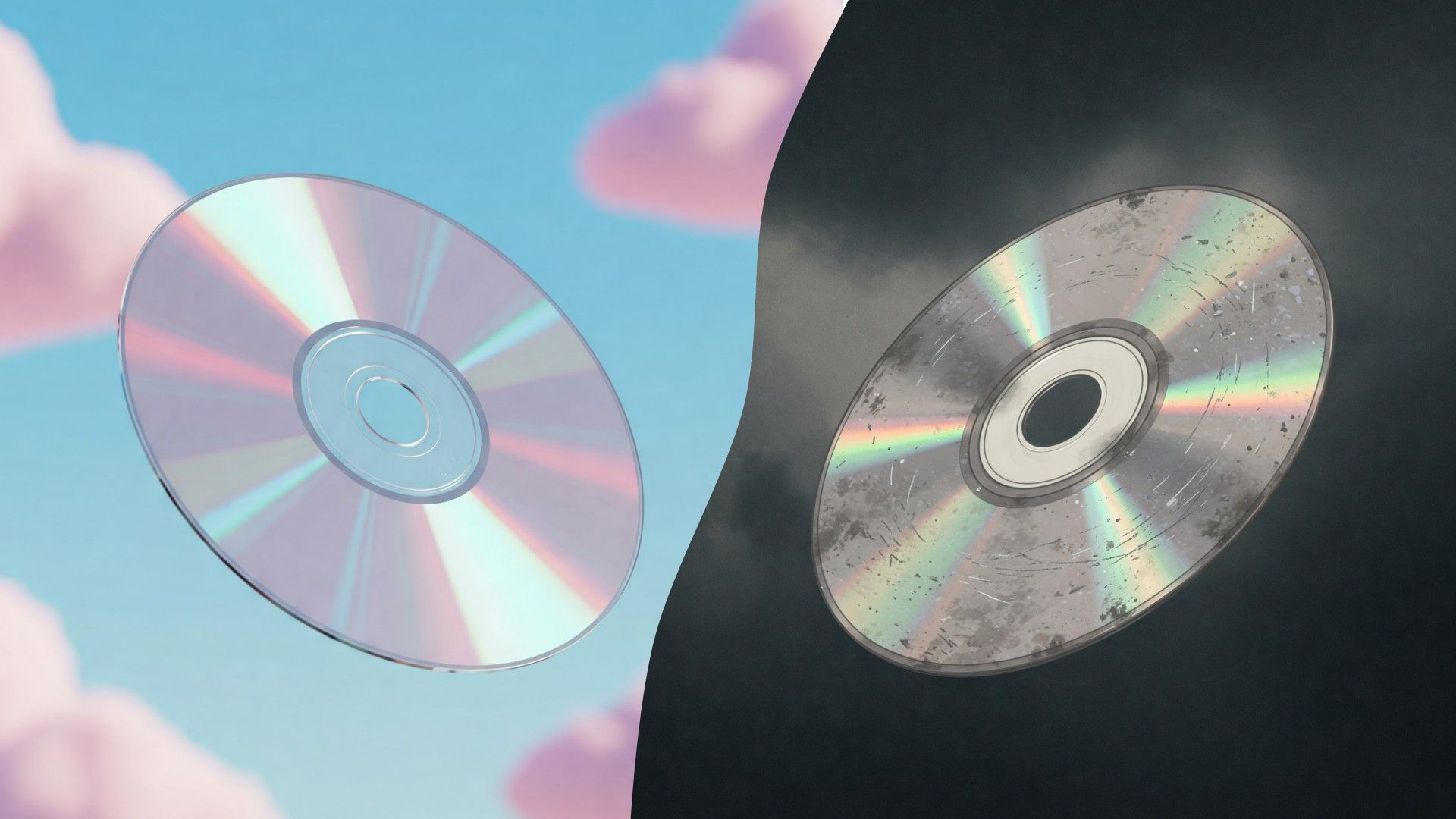There have been many formats introduced for playing music over the years, but none have dominated more than CDs. After peaking in 2002, it’s been a slow decline ever since. However, their turn as the golden child of physical media may not be over.
The Compact Disc Arrives
In 1979, Philips showed a prototype of the “Compact Disc” at a press conference in Eindhoven, Netherlands. There was some initial skepticism, as there is with many new products, but Sony saw the potential. Philips and Sony would join forces to continue development and work on bringing CDs to the public.
The first 50 commercially available CD titles were released in Japan on October 1st, 1982, followed by 16 titles in Europe and North America on March 14th, 1983. At that time, the most popular music formats by revenue share in the U.S. looked like this:
|
Vinyl |
🟦🟦🟦🟦🟦🟦🟦🟦🟦🟦 50.12% |
|
Cassette |
🟩🟩🟩🟩🟩🟩🟩🟩🟩🟩 49.05% |
|
CD |
🟨 0.83% |
|
8-Track |
0% |
Vinyl was already on the decline in 1983. It’s been around forever, but in the modern music era, it peaked at around 72% of music revenue in the early 1970s. Cassettes would finally pass vinyl the month after CDs launched and continue to rise until they peaked at 55% in 1985. We’ll soon see how minuscule these numbers look next to CDs.
CDs Decimate the Competition
By the time cassette revenue started to drop in 1985, CDs had already surpassed 10% of the market. One year later, in March 1986, CD revenue share had already doubled and was on the verge of overtaking vinyl–that would happen in May.
The cassette, however, was still going strong. It would take until March 1990 for CDs to finally take the top spot. Here’s what the landscape looked like:
|
CD |
🟨🟨🟨🟨🟨🟨🟨🟨🟨🟨 47.86% |
|
Cassette |
🟩🟩🟩🟩🟩🟩🟩🟩🟩🟩 47.75% |
|
Vinyl |
🟦 2.15% |
|
Music Video |
🟥 2.13% |
You’ll remember that cassettes peaked in popularity with 55% of total music revenue–CDs would pass that number later in 1990. Four years later, in early 1994, CDs passed vinyl’s one-time peak of 72%, nearly tripling cassettes in second place. But CDs were still relatively new–there was room to grow.
And grow they did. The popularity of CDs continued to rise for nearly a decade. They thoroughly dwarfed every other music format. The steady increase finally slowed and stopped in December 2002, and it was a picture of complete and utter control:
|
CD |
🟨🟨🟨🟨🟨🟨🟨🟨🟨🟨🟨🟨🟨🟨🟨🟨🟨🟨🟨🟨 95.7% |
|
Music Video |
🟥 2.35% |
|
Cassette |
🟩 1.66% |
|
Vinyl |
0.4% |
That’s pretty incredible. 95% of all music sold in the United States was on CDs. Ninety-five. To say Sony was right in seeing the potential of CDs is a massive understatement. There hadn’t been such an overwhelmingly popular music format since phonograph records like vinyl were essentially the only way to play recorded music.
CDs would remain the most popular music format until digital downloads took over in July 2011. The compact disc’s 21 years and 4 months as the top dog had finally come to an end.
The Steep Decline
Digital downloads and streaming quickly became the most popular music formats after 2011, but CDs didn’t immediately disappear. They remained the most popular physical media music format until May 2019, when vinyl took over again. But by that time, all physical media was in the shadow of the internet age:
|
Streaming |
🟧🟧🟧🟧🟧🟧🟧🟧🟧🟧🟧🟧🟧🟧🟧 80.94% |
|
Digital Download |
🟪🟪🟪🟪 6.77% |
|
Vinyl |
🟦🟦 4.88% |
|
CD |
🟨🟨 4.86% |
The meteoric climb and steep decline of CDs is fascinating. When new formats become as popular as CDs were, they’re typically replaced by something new. That happened with digital downloads and streaming, but then CDs also fell behind something old. A decade after CDs had obliterated vinyl, they were surpassed by them again.
Vinyl revenue has continued to grow over the last five years, but it seems to be slowing. CDs, meanwhile, are seeing a small uptick for the first time since their peak in 2002. From H1 2023 to H1 2024, CD sales rose 3.3%.
The CD Resurgence?
Are we really in the midst of a CD comeback? It’s most likely too early to tell since the changes are so small. However, one thing does seem to be happening: people are turning to physical media. Last year, physical music sales rose while digital music sales dropped.
In reality, CDs have a couple of big advantages over vinyl and digital downloads. First, vinyl is very trendy and harder to manufacture, which means inflated prices. Taylor Swift’s Midnights album is $30 on vinyl and only $13 on CD, for example.
CDs are also pretty easy to convert into high-fidelity digital music files–much, much easier than vinyl. You get the best of both the physical and digital music worlds. Plus, it’s often cheaper than purchasing digital downloads. You can find a second-hand CD, rip the tracks from it, and you’ve got a cost-effective way to enlarge your music library.
We’ll definitely never see CDs back where they were in the early 2000s. In fact, we may never see a music format reach that level of popularity again. CDs had their time in the spotlight, but they’re not forgotten.





